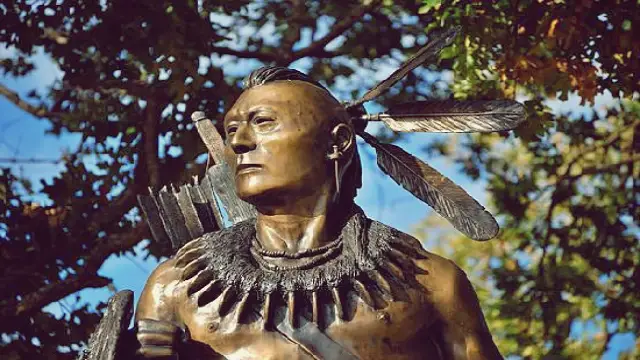In our previous posts, we explored the Six Nations of the Iroquois Confederacy and the Black Seminoles. Now, let’s shift our focus to another group of Native Americans often labeled as “civilized.” This term has always bothered me. It suggests that other tribes were somehow less advanced. In reality, every tribe had its own form of governance, methods for resolving conflicts, and ways to educate their youth. If that’s not civilization, I don’t know what is.
The term “civilized” was used by early European settlers to describe five specific tribes. These tribes—Cherokee, Choctaw, Chickasaw, Creek, and Seminole—adopted certain European customs. They practiced agriculture, formed towns, and even accepted Christianity to some extent. Some young men were sent to White schools, and intermarriage with settlers occurred. Unfortunately, these tribes also engaged in slavery and plantation farming. Their goal was to coexist peacefully with settlers and gain acceptance as equals, not as “savages.” Sadly, this strategy ultimately failed. In the 1830s, members of these tribes were forcibly removed from their lands and sent on the tragic Trail of Tears to Oklahoma.
The Cherokee: The Principal People
The Cherokee, known as Ani-yu-wiya (meaning “principal people”), are the largest of these tribes. The name “Cherokee” may come from a Choctaw word meaning “people of the mountains” or “those who dwell in cave country.” They are an Iroquoian-speaking people, and their language is sometimes referred to as Tsalagi.
The Cherokee originally inhabited areas around present-day New York, alongside other Iroquois nations. While the exact timeline of their migration to the Southeast is unclear, they likely settled in North and South Carolina, Kentucky, Tennessee, and Georgia hundreds of years ago. Like other Iroquoian tribes, Cherokee society is matrilineal and agricultural. They were also skilled warriors, defending their hunting grounds against powerful tribes like the Shawnee and Catawba.
The Choctaw, Chickasaw, and Creek: Descendants of the Mound Builders
The Choctaw, Chickasaw, and Creek tribes speak Muscogean languages. Scholars believe they descended from the ancient Mississippian culture, known for its impressive mound-building. During Hernando de Soto’s expeditions in the 1530s, he encountered remnants of this declining civilization and possibly met early ancestors of these tribes.

These tribes thrived in the lower Southern States, from Louisiana to Alabama. Spanish missionaries worked with them for many years, and some accepted Catholicism. However, they continued to practice their indigenous beliefs. One of the most significant events in their culture is the Green Corn Ceremony. This annual celebration marks the corn harvest and includes community feasting, dancing, and rituals. During the ceremony, young men receive their adult names and the right to train as warriors. A special drink made from Yaupon Holly, known as Black Drink or Asi, is served, accompanied by a shout of “Yahola.”
One notable figure from this tradition is Osceola, a young warrior of Creek heritage who became legendary for his leadership during the Seminole Wars.
The Seminoles: The Free People
The Seminoles primarily descended from Creeks who migrated to Florida for various reasons. Some followed Spanish missionaries, while others sought refuge from encroaching settlers before the Seven Years War (1755-1762). The extent to which these Creeks merged with existing Florida tribes, such as the Yamassee and Miccosuki, remains debated.
The name “Seminole” may derive from the Spanish word cimarron, meaning “wild” or “runaway.” However, the Seminoles refer to themselves as yat-siminoli, meaning “free people.” Like the Creeks, Seminole society is matrilineal, with towns serving as the primary units of governance. They practiced agriculture and some leaders, like Tiger Tail, spoke English. The Seminoles were open to coexisting with settlers in Florida, provided they were left undisturbed. Unfortunately, this was not to be.
Conclusion: A Legacy of Resilience
The stories of these tribes highlight their resilience and adaptability in the face of overwhelming challenges. Despite their efforts to integrate and coexist with European settlers, they faced tragic consequences. The forced relocations and wars that followed are a testament to their strength and determination.
In our next post, we will delve deeper into the Cherokee’s most significant contribution—a system of writing that preserved their language and culture. Stay tuned for more insights into the rich history of these remarkable tribes!

